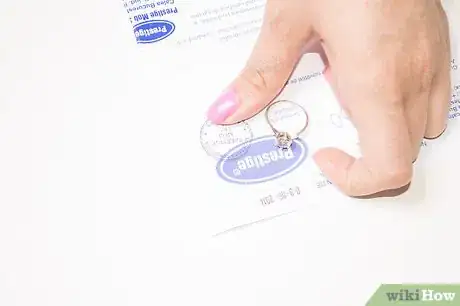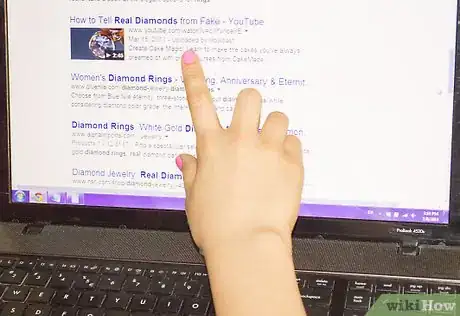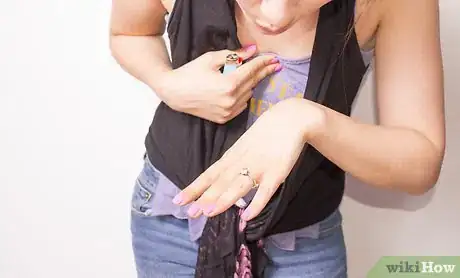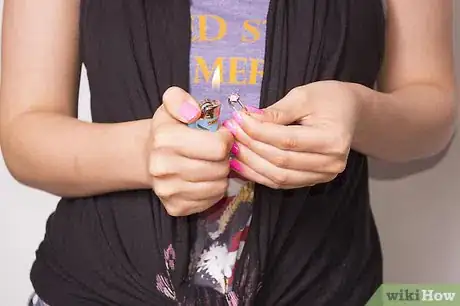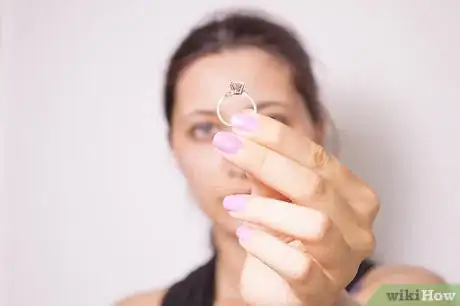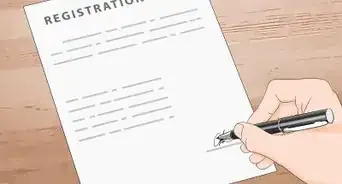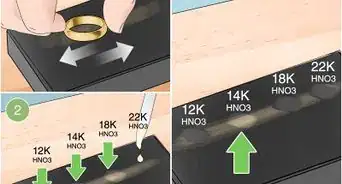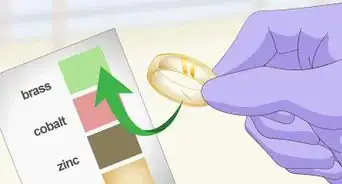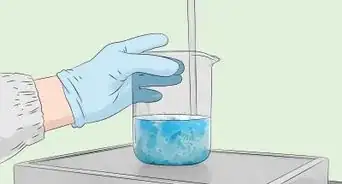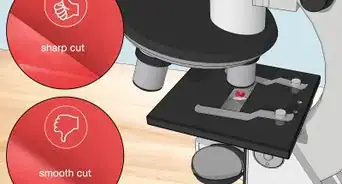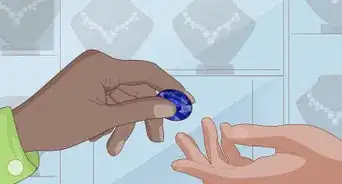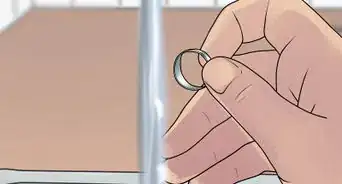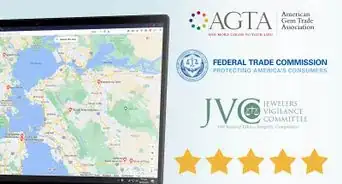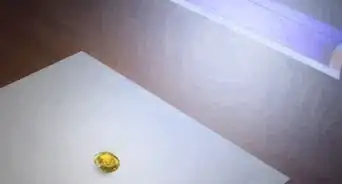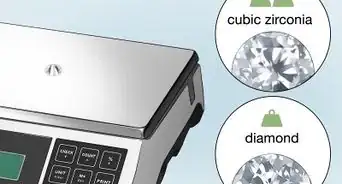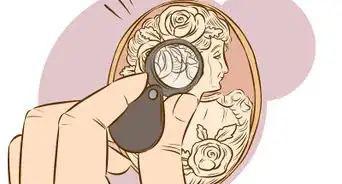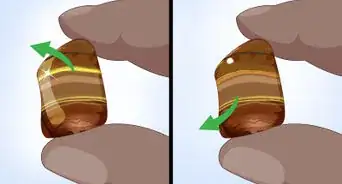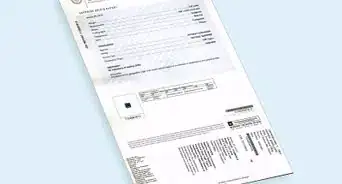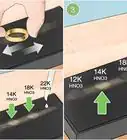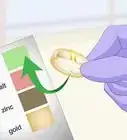wikiHow is a “wiki,” similar to Wikipedia, which means that many of our articles are co-written by multiple authors. To create this article, 12 people, some anonymous, worked to edit and improve it over time.
wikiHow marks an article as reader-approved once it receives enough positive feedback. In this case, 92% of readers who voted found the article helpful, earning it our reader-approved status.
This article has been viewed 29,927 times.
Learn more...
Diamonds are luxury embodied. If you're looking to buy a good quality diamond, there are multiple small details you need to be aware of, as these can change the actual value of a diamond considerably. Knowing the real quality of a diamond you are about to buy can save you a lot of money and prevent disappointment.
Steps
-
1Ask for a certificate. Every stone should be appraised and issued a certificate. Of course biased appraisers will write whatever boutique owner needs, so certificates should be issued by a respectable authority. Certificate should be up-to-date, as absence of regular appraisal shows some possible issues with the stone.
-
2Do your homework. Stamp GIA on a certificate is not 100% grant it is real. Gemological Institute of America Inc. (GIA) is the world-known facility, trusted by all shop owners and customers. However their certificate appraisal costs quite a sum, while Gemology Institute of America (GIA) is a fake issuing fakes. Do not be fooled by abbreviations, so browse and write down the names of the most popular and trusted appraising companies.Advertisement
-
3Breathe on it. Take the gem with pincers and breathe on it. Real diamonds disperse moisture at once, so the stone will remain clear. Fakes will have spots of moisture on them and if you breathe on them for some time, it will begin condensing, while real diamond will remain clean.
-
4Heat the stone. As diamonds disperse heat immediately, the real stone will remain cold after heating them by a lighter for 30 seconds. This is a standard check you can and should require to be done in your presence.
-
5Try to look through it. Diamonds are not silicon, they are carbon and their inner structure prevents light from passing through directly – that is why they are so shiny. Place a stone on a paper with a text. If you see only a black spot, this is diamond. In case you see some lines and shapes, this is obviously a fake. Placing a real diamond on a dot on a sheet of paper will result in a black spot visible through it. Fake will show circle instead.
Warnings
- Know about 4 C’s. The overall diamond quality is described through the 4 C’s: carat, color, cut and clarity. This topic is vast and is best described on the sites of GIA and other respected appraisers. If you spare some time to research it, you will be able to see if you are told the truth or lied to with a cold blood.⧼thumbs_response⧽
- Have a copy of the vendor’s certificate. In case your appraisal shows different results, the vendor may accuse you in swapping the stones. Having a copy of the original certificate not only allows the appraiser to make the test results more comparative, but also protects you.⧼thumbs_response⧽
- Paying the pledge may be risky. To issue an additional appraisal you should pay the pledge to be able to take the stone out of the store without actually buying it. However, many vendors refuse to return the pledge in case appraisal shows different results, than stated in the certificate. Make sure you have a signed treaty that in case of purchase cancellation due to any reason, you will have your money back. Otherwise you may face a situation when these funds may be applied only as a discount to your next purchase or cannot be refunded due to some other reason.⧼thumbs_response⧽
- Avoid buying on trips. While boutiques in the US and Europe are law abiding and comply with the laws and policies, most of the vendors worldwide do not. Buying on a trip on Caribbean or in Brazil, or in Singapore will most likely result in buying fake or overpaying. Diamonds are a serious business and rush is a bad advisor.⧼thumbs_response⧽
- Consult with a specialist. No matter how legitimate and valid the certificate seem, additional appraisal would not be excessive. Some minor flaws like laser drills can be located only using special equipment only a professional appraiser possesses. Just don’t take the closest to the store or their partner.⧼thumbs_response⧽
